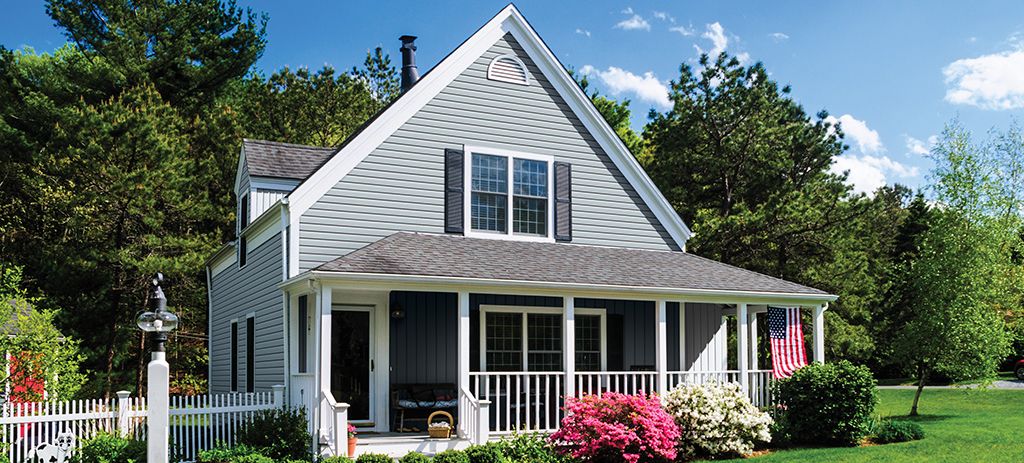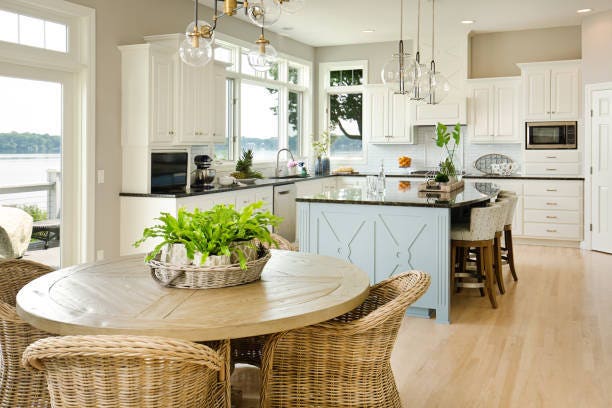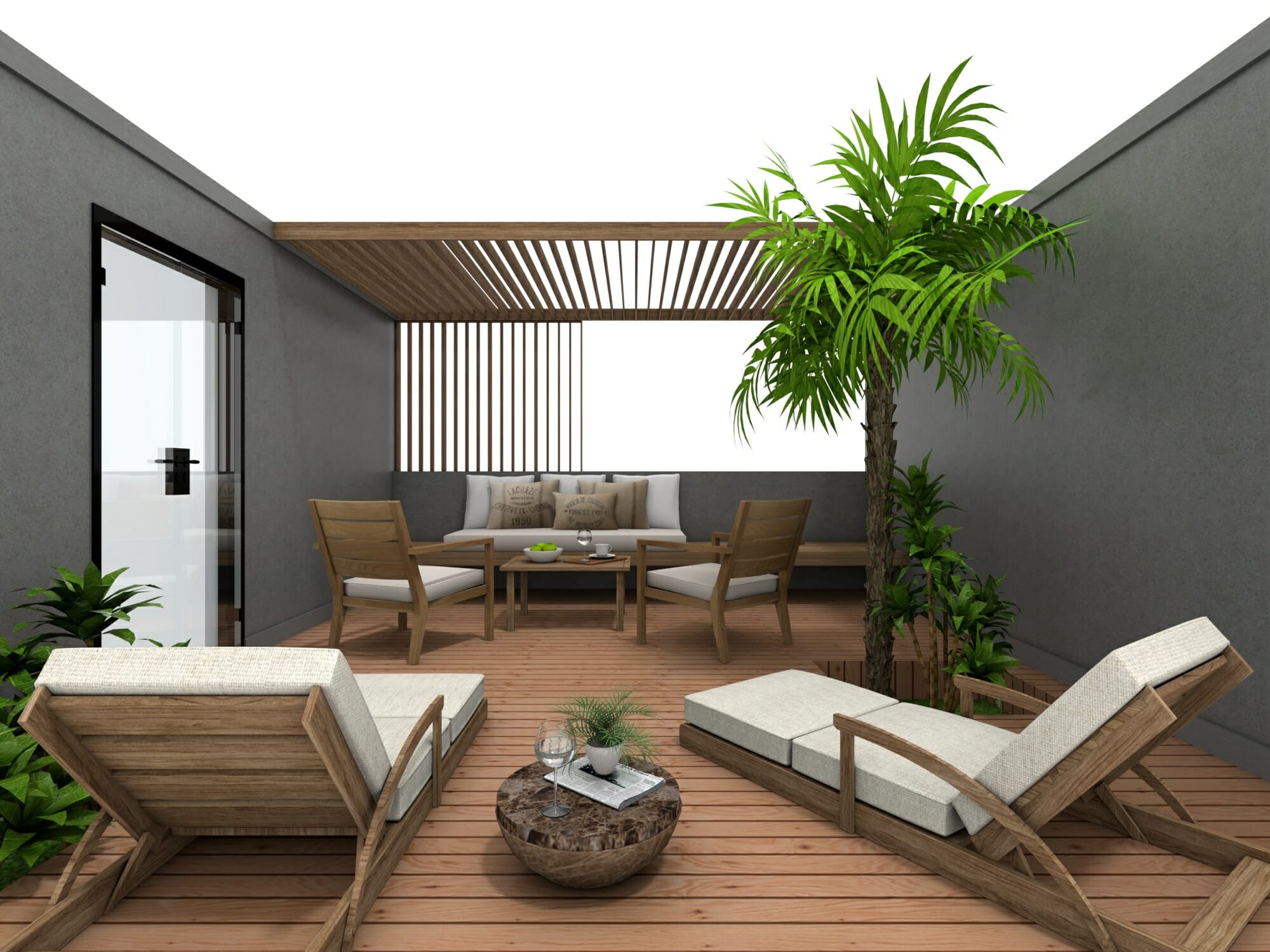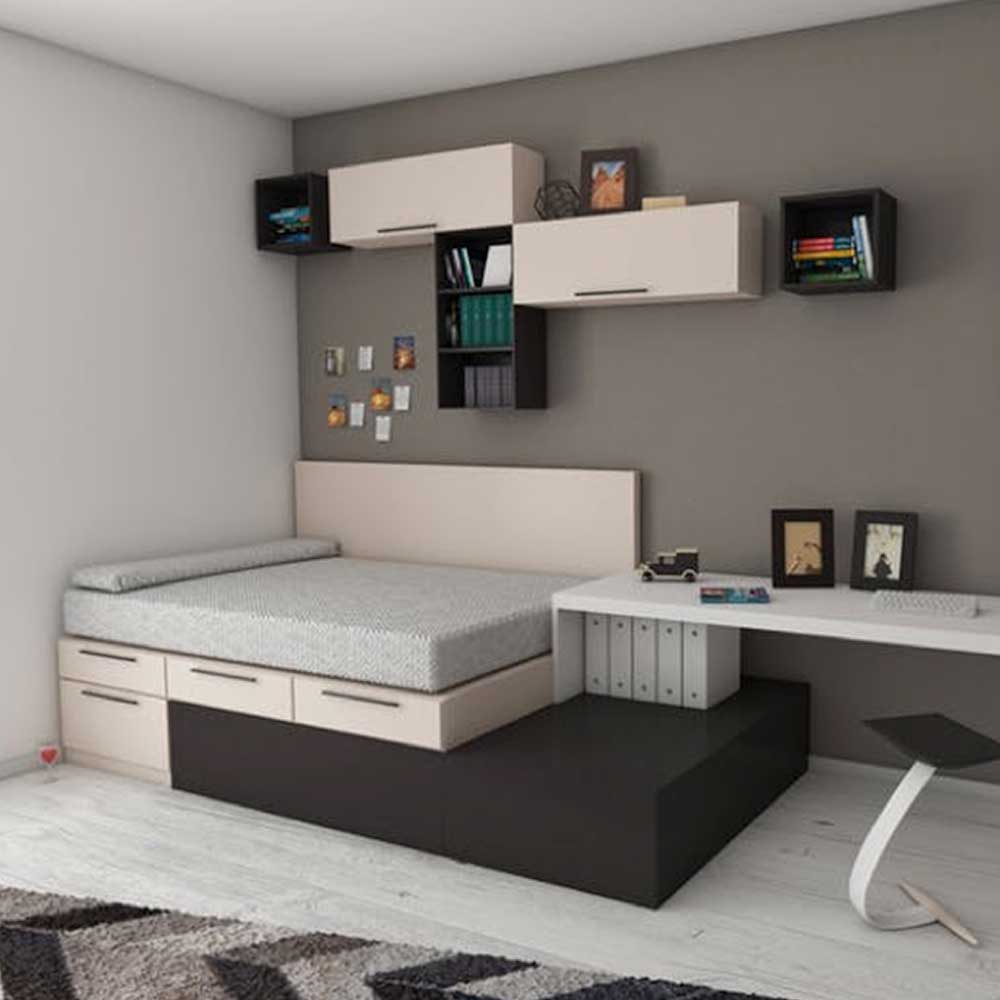Allergy-Friendly Home Improvement Ideas for a Healthier Living Environment
Contents
- 1 Introduction
- 2 Allergy-Friendly Home Improvement Ideas: Strengths and Weaknesses
- 3 Allergy-Friendly Home Improvement Ideas: Strengths and Weaknesses
- 4 Frequently Asked Questions
- 4.1 1. Are air purifiers effective in reducing allergies?
- 4.2 2. Can carpeted floors be allergy-friendly?
- 4.3 3. Do window screens prevent allergens from entering the home?
- 4.4 4. How can I prevent dust mites in my bedroom?
- 4.5 5. Which pets are hypoallergenic?
- 4.6 6. Should I keep windows open for ventilation?
- 4.7 7. Are eco-friendly cleaning products effective?
- 4.8 8. Can mold be completely eliminated from the home?
- 4.9 9. Should I avoid having indoor plants due to allergies?
- 4.10 10. How often should air ducts be cleaned?
- 4.11 11. Can installing a dehumidifier help with allergies?
- 4.12 12. Are there specific paints that are better for allergy sufferers?
- 4.13 13. How can I minimize allergens in the kitchen?
- 5 Conclusion
- 6 Author
Introduction
Hello Readers,
Welcome to our journal article on Allergy-Friendly Home Improvement Ideas for a Healthier Living Environment. In this article, we will discuss various innovative and practical solutions to create an allergy-friendly home that promotes a healthier lifestyle. Allergies can significantly impact our daily lives, causing discomfort and reducing overall well-being. However, with a few simple modifications, we can transform our homes into safe and comfortable spaces that mitigate allergy triggers.
Living with allergies can be challenging, as allergens are present both indoors and outdoors. However, by implementing allergy-friendly home improvement ideas, we can minimize exposure to common allergens such as dust mites, pet dander, pollen, and mold. These improvements not only provide relief to individuals suffering from allergies but also contribute to a healthier living environment for everyone in the household.
In this article, we will explore a wide range of allergy-friendly home improvement ideas, from choosing the right flooring materials to adopting eco-friendly cleaning practices. We will highlight the strengths and weaknesses of each idea, providing detailed explanations to help you make informed decisions. Additionally, we have included a comprehensive table summarizing all the information for your convenience.
We understand the importance of addressing the common concerns and queries related to allergy-friendly home improvements. Therefore, we have included a detailed FAQ section that covers thirteen different frequently asked questions. We hope this article will empower you to create a home environment that promotes health and well-being while keeping allergies at bay.
Allergy-Friendly Home Improvement Ideas: Strengths and Weaknesses
1. Air Purification Systems
Purifying the air in your home can significantly reduce allergens, improving the overall air quality. High-efficiency particulate air (HEPA) filters effectively capture airborne particles. However, these systems can be expensive to install and maintain.
Similarly, electronic air cleaners utilize an ionizing technology to eliminate allergens. While effective, they require regular cleaning and maintenance to ensure optimal performance.
Ultraviolet germicidal irradiation (UVGI) systems use ultraviolet light to kill germs and allergens. However, these systems are not effective against allergens that are not directly exposed to UV light.
In conclusion, air purification systems offer significant benefits in reducing allergens, but their effectiveness and costs should be carefully considered.
2. Flooring Options
Choosing the right flooring material is crucial for allergy-friendly homes. Hard surfaces like hardwood, laminate, or tile are easier to clean and do not trap allergens. However, they may not offer the same level of comfort as carpeted floors.
If you prefer carpet, opt for low-pile carpets or carpets made from natural fibers that are less prone to harboring allergens. Regular vacuuming and deep cleaning are essential to maintain an allergy-friendly environment.
Each flooring option has its own strengths and weaknesses, and it is important to consider factors such as lifestyle, budget, and personal preferences before making a decision.
3. Window Treatments
Window treatments play a crucial role in minimizing allergen exposure. Use washable curtains or blinds made from synthetic materials, as they are less likely to accumulate allergens. Avoid heavy drapes that can harbor dust and other allergens.
Consider installing window screens to prevent pollen and other outdoor allergens from entering your home. However, keep in mind that these screens may limit natural ventilation.
Ultimately, finding the right balance between aesthetics and practicality is the key to selecting suitable window treatments for allergy-friendly homes.
4. Dust Mite Prevention
Dust mites are a common cause of allergies. To minimize their presence, encase mattresses, pillows, and box springs in allergen-proof covers. Regularly wash bedding in hot water and avoid excessive humidity, as dust mites thrive in moist environments.
Wooden furniture and easy-to-clean surfaces are preferable over upholstered furniture, which can accumulate dust mites. Implementing these measures can significantly reduce dust mite populations in your home.
5. Pet-Friendly Considerations
Pet dander is a major allergen for many individuals. If you have allergies and still want to keep a pet, opt for hypoallergenic breeds that produce fewer allergens.
Designate specific areas for your pets, such as pet beds or crates, to minimize their impact on clean areas of the house.
Frequent grooming, vacuuming, and cleaning of pet areas can further reduce allergens associated with pets and create a more allergy-friendly home.
6. Efficient Ventilation
Proper ventilation can help reduce indoor allergens by improving air circulation. Consider installing exhaust fans in kitchens and bathrooms to remove excess moisture, which can lead to the growth of mold. Ensure vents and air ducts are regularly cleaned to prevent the accumulation of dust and allergens.
However, be cautious with open windows, especially during peak pollen seasons, as this may introduce outdoor allergens into your home.
7. Eco-Friendly Cleaning
Choosing environmentally friendly cleaning products can contribute to a healthier home environment. Opt for non-toxic, fragrance-free cleaners to minimize the risk of triggering allergies or asthma.
Regular cleaning of surfaces, floors, and upholstery is imperative to remove allergens. Use microfiber cloths that trap and capture allergens effectively.
Remember to vacuum with a HEPA filtration system to effectively remove allergens from carpets and rugs.
Allergy-Friendly Home Improvement Ideas: Strengths and Weaknesses
1. Air Purification Systems
Purifying the air in your home can significantly reduce allergens, improving the overall air quality. High-efficiency particulate air (HEPA) filters effectively capture airborne particles. However, these systems can be expensive to install and maintain.
Similarly, electronic air cleaners utilize an ionizing technology to eliminate allergens. While effective, they require regular cleaning and maintenance to ensure optimal performance.
Ultraviolet germicidal irradiation (UVGI) systems use ultraviolet light to kill germs and allergens. However, these systems are not effective against allergens that are not directly exposed to UV light.
In conclusion, air purification systems offer significant benefits in reducing allergens, but their effectiveness and costs should be carefully considered.
2. Flooring Options
Choosing the right flooring material is crucial for allergy-friendly homes. Hard surfaces like hardwood, laminate, or tile are easier to clean and do not trap allergens. However, they may not offer the same level of comfort as carpeted floors.
If you prefer carpet, opt for low-pile carpets or carpets made from natural fibers that are less prone to harboring allergens. Regular vacuuming and deep cleaning are essential to maintain an allergy-friendly environment.
Each flooring option has its own strengths and weaknesses, and it is important to consider factors such as lifestyle, budget, and personal preferences before making a decision.
3. Window Treatments
Window treatments play a crucial role in minimizing allergen exposure. Use washable curtains or blinds made from synthetic materials, as they are less likely to accumulate allergens. Avoid heavy drapes that can harbor dust and other allergens
Consider installing window screens to prevent pollen and other outdoor allergens from entering your home. However, keep in mind that these screens may limit natural ventilation.
Ultimately, finding the right balance between aesthetics and practicality is the key to selecting suitable window treatments for allergy-friendly homes.
4. Dust Mite Prevention
Dust mites are a common cause of allergies. To minimize their presence, encase mattresses, pillows, and box springs in allergen-proof covers. Regularly wash bedding in hot water and avoid excessive humidity, as dust mites thrive in moist environments.
Wooden furniture and easy-to-clean surfaces are preferable over upholstered furniture, which can accumulate dust mites. Implementing these measures can significantly reduce dust mite populations in your home.
5. Pet-Friendly Considerations
Pet dander is a major allergen for many individuals. If you have allergies and still want to keep a pet, opt for hypoallergenic breeds that produce fewer allergens.
Designate specific areas for your pets, such as pet beds or crates, to minimize their impact on clean areas of the house.
Frequent grooming, vacuuming, and cleaning of pet areas can further reduce allergens associated with pets and create a more allergy-friendly home.
6. Efficient Ventilation
Proper ventilation can help reduce indoor allergens by improving air circulation. Consider installing exhaust fans in kitchens and bathrooms to remove excess moisture, which can lead to the growth of mold. Ensure vents and air ducts are regularly cleaned to prevent the accumulation of dust and allergens.
However, be cautious with open windows, especially during peak pollen seasons, as this may introduce outdoor allergens into your home.
7. Eco-Friendly Cleaning
Choosing environmentally friendly cleaning products can contribute to a healthier home environment. Opt for non-toxic, fragrance-free cleaners to minimize the risk of triggering allergies or asthma.
Regular cleaning of surfaces, floors, and upholstery is imperative to remove allergens. Use microfiber cloths that trap and capture allergens effectively.
Remember to vacuum with a HEPA filtration system to effectively remove allergens from carpets and rugs.
| Allergy-Friendly Home Improvement Ideas | Strengths | Weaknesses |
|---|---|---|
| Air Purification Systems | Reduces airborne allergens | Expensive installation and maintenance |
| Flooring Options | Easier to clean, reduces allergen accumulation | May lack comfort, requires regular cleaning |
| Window Treatments | Minimizes allergen exposure | Limits natural ventilation |
| Dust Mite Prevention | Reduces dust mite populations | Requires regular maintenance |
| Pet-Friendly Considerations | Allows pet ownership with reduced allergen exposure | Requires additional cleaning and maintenance |
| Efficient Ventilation | Improves air circulation, reduces indoor allergens | Potential introduction of outdoor allergens |
| Eco-Friendly Cleaning | Uses non-toxic cleaners, reduces allergic reactions | Requires regular cleaning routines |
Frequently Asked Questions
1. Are air purifiers effective in reducing allergies?
Absolutely! Air purifiers with HEPA filters can significantly reduce airborne allergens, providing relief for allergy sufferers.
2. Can carpeted floors be allergy-friendly?
With proper care and cleaning, low-pile carpets or carpets made from natural fibers can be allergy-friendly. Regular vacuuming and professional deep cleaning are essential to maintain allergen-free carpets.
3. Do window screens prevent allergens from entering the home?
Window screens can help minimize outdoor allergen entry, but they may limit natural ventilation. Regular cleaning of screens is necessary to keep them free from pollen and other allergens.
4. How can I prevent dust mites in my bedroom?
Encase your mattresses, pillows, and box springs in allergen-proof covers. Regularly wash bedding in hot water and maintain low humidity levels in the bedroom.
5. Which pets are hypoallergenic?
Breeds such as poodles, bichon frises, and schnauzers are considered hypoallergenic as they produce fewer allergens. However, individual sensitivities may still vary.
6. Should I keep windows open for ventilation?
While fresh air is beneficial, during peak pollen seasons, it’s advisable to keep windows closed or use air purifiers to avoid introducing outdoor allergens into the home.
7. Are eco-friendly cleaning products effective?
Yes, non-toxic and fragrance-free cleaning products are effective in cleaning and removing allergens. Make sure to follow instructions and guidelines provided by manufacturers.
8. Can mold be completely eliminated from the home?
While it’s challenging to completely eliminate mold, proper ventilation, reducing moisture, and regular cleaning can significantly reduce the risk of mold growth in the home.
9. Should I avoid having indoor plants due to allergies?
Some indoor plants can release allergens, while others can actually improve air quality. It’s important to choose plants carefully, considering individual sensitivities and potential allergic reactions.
10. How often should air ducts be cleaned?
Air ducts should be cleaned every 3 to 5 years to prevent the accumulation of dust, allergens, and other contaminants. Regular inspection is recommended to identify any signs of mold or excessive debris.
11. Can installing a dehumidifier help with allergies?
Installing a dehumidifier can help reduce moisture levels, preventing mold growth and minimizing allergens. However, it’s important to monitor humidity levels and maintain the device regularly.
12. Are there specific paints that are better for allergy sufferers?
Low or zero VOC (volatile organic compound) paints are recommended for allergy sufferers, as they contain fewer harmful chemicals that can trigger allergic reactions.
13. How can I minimize allergens in the kitchen?
Regularly clean countertops, cabinets, and appliances to remove food particles and prevent the accumulation of allergens. Use proper ventilation when cooking to minimize indoor air pollution.
Conclusion
Creating an allergy-friendly home is essential for a healthier living environment, especially for individuals with allergies or respiratory sensitivities. By adopting the various home improvement ideas discussed in this article, you can significantly reduce exposure to allergens and improve overall air quality.
From implementing air purification systems and choosing the right flooring options to practicing eco-friendly cleaning routines, each step contributes to a more comfortable and allergy-friendly home.
We hope this article has provided you with valuable insights and information to create a living space that promotes better health and well-being. Take action today and start transforming your home into an allergy-friendly haven!
Disclaimer: The information provided in this article is for educational purposes only and does not replace professional medical advice. Consult with a healthcare professional or allergist for personalized guidance.










